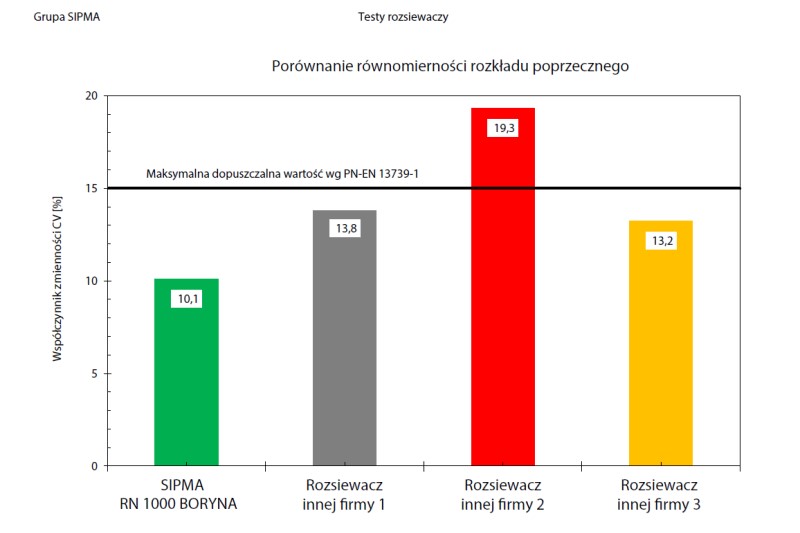

The precision of sowing in fertilizer spreaders is one of the most important characteristics of this product, but nowhere can we find the results of comparative studies on the uniformity of sowing. With unique possibilities in the form of a professional seeding hall (and the only in Poland), SIPMA decided to conduct such research in Lublin, and also to show how one of the company’s products – fertilizer spreaders – has been developing over the years.
The event was conducted together with R&D Center INVENTOR Sp. z o.o. – a company belonging to the SIPMA GROUP, employing a professional team of designers, technologists and researchers who use a modern research park. A range of spreaders with a capacity of up to 2,000 liters was selected for comparison. During the presentation of individual machines, the key parameters of their work were compared, i.e .:
Fertilizer spreaders moved across the line of containers at a specific speed on a specially constructed electronically controlled platform. The weight of the fertilizer in the containers was measured automatically with the use of an electronic measuring system, which simultaneously calculated certain parameters and presented the results in the form of graphs.
For normal and late top dressing according to of the standard, the permissible degree of unevenness should not exceed 15%. The standard applies to all working widths and to all brands of spreaders. In the case of the SIPMA RN 1000 BORYNA spreader, the degree of non-uniformity of the previous distribution was 10.1%. The result of the SIPMA spreader turned out to be the best among the four tested that day.

In the construction of SIPMA spreaders, a special emphasis is placed on the development of technology supporting and optimizing the operation of machines. The company emphasizes the constant efforts to increase the efficiency of machines, while guaranteeing the user the comfort of work and operation.
Testing the fertilizer spreaders gave the opportunity to collect comments and observations regarding the construction of the spreaders and to formulate design, technological, production and visualization conclusions that will be used in further work on the product.
